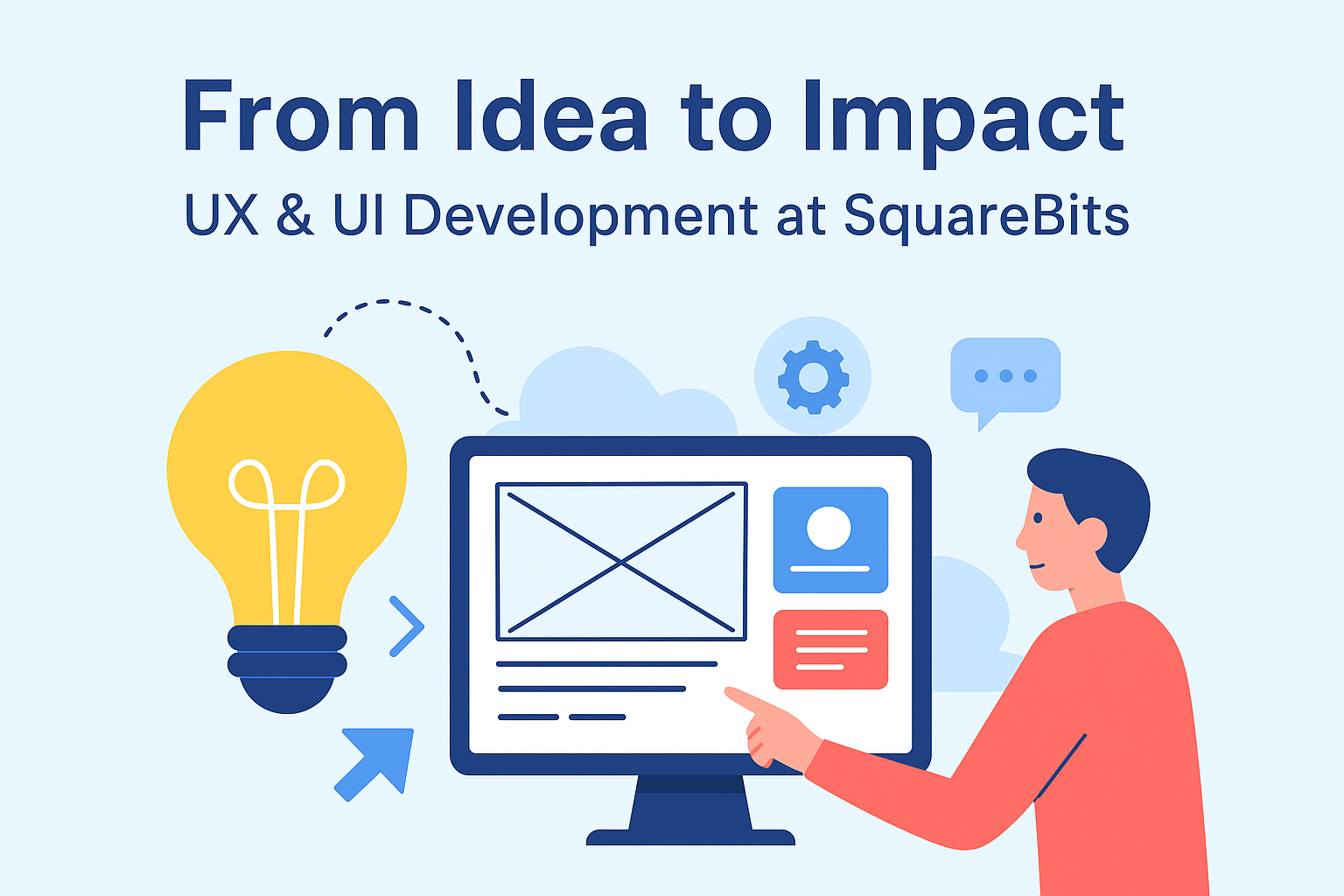In today’s digital world, a great product isn’t defined only by clean code or cutting-edge architecture. What truly makes a product memorable is how it feels — how intuitive its user interface is, how smooth the user experience flows, and how delightfully it responds to real people using it.
At SquareBits, we believe UX/UI development is the bridge between vision and adoption. Below is how we approach it — from first sketch to final release.
1. Discovery & Research: Know Your Users Deeply
- We begin by asking: Who are your users? What problems do they face?
- Conduct user interviews, surveys, market research, and competitive audits.
- Define personas, user journeys, and key flows.
- This phase ensures we don’t build features that nobody needs.
2. Wireframes & Prototypes: Test Before You Code
- Low-fidelity wireframes map out layout, content hierarchy, and user flows.
- Interactive prototypes let stakeholders and real users click through a mock version.
- Early feedback here prevents big changes later in code.
3. UI Design: Visual Language Meets Usability
- We craft visual systems (colors, typography, spacing, iconography) that match your brand while being usable.
- Emphasis on consistency, modular components, style guides, and design systems.
- Micro-interactions, transitions, and feedback cues add delight.
- Always design for accessibility: contrast, readability, responsive design.
4. UX Refinement: Iterate with Testing
- Usability testing (remote or in person) gives real insights into pain points.
- Watch where users hesitate, backtrack, or get confused.
- Iterate designs based on findings, often going through several rounds.
5. Handoff & Collaboration with Devs
- We prepare clear design specifications, redlines, assets, and style guides.
- Use tools like Figma, Zeplin, or design-systems for seamless handoff.
- Designers and developers remain in sync — regular reviews, feedback loops, QA design checks.
6. Continuous Improvement
- After launch, monitor analytics (heatmaps, click paths, dropoffs) to spot UX friction.
- A/B testing of variations to improve conversion, retention, or engagement.
- Plan design sprints to add new features or refine existing ones, always with UI/UX in mind.
Why This Approach Matters
- It reduces rework and technical debt — catching design issues before code is written.
- Builds user trust, satisfaction, and loyalty.
- Helps the product scale gracefully, both visually and functionally.
- It aligns product, business, and user needs — not just what looks good

Leave a Reply